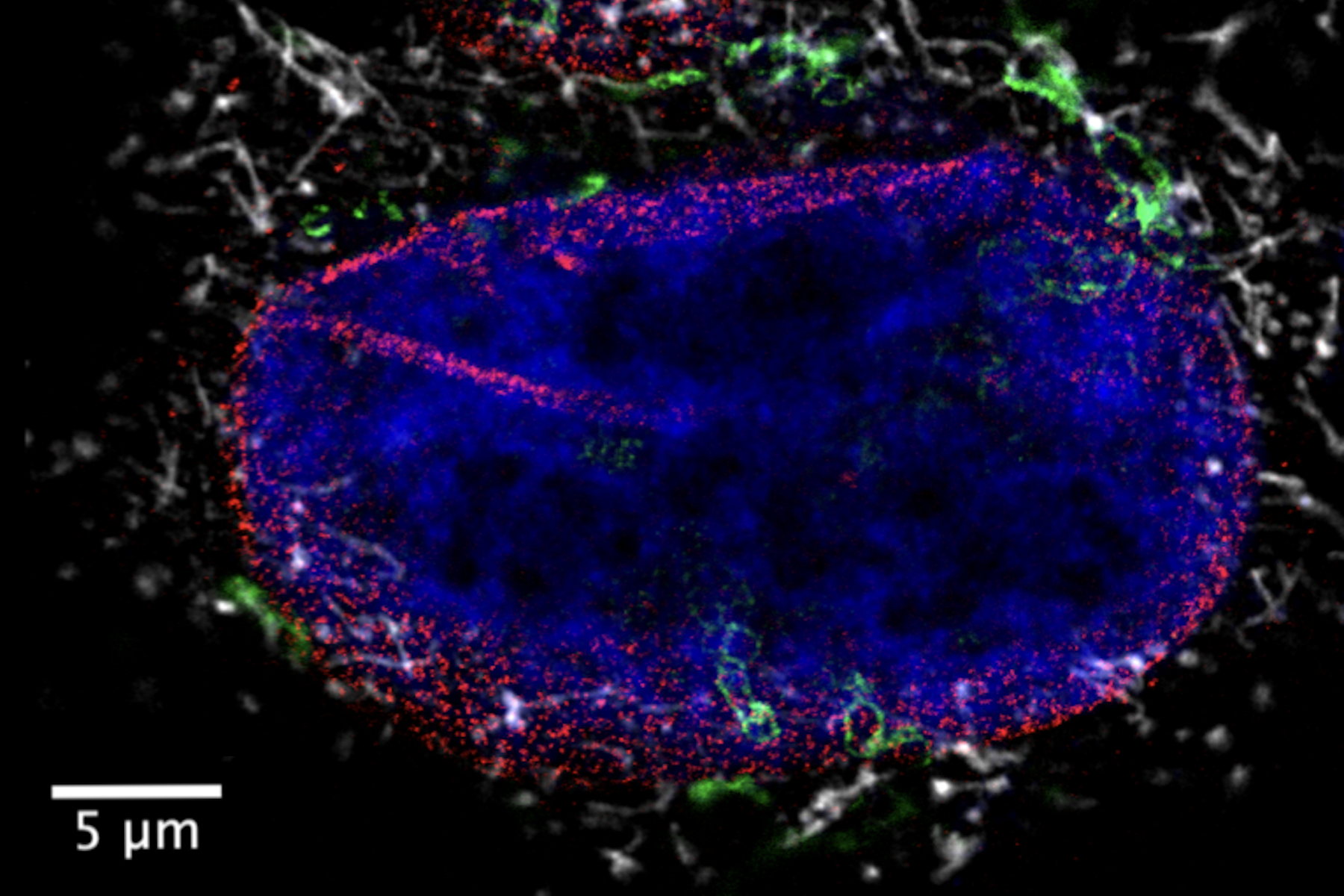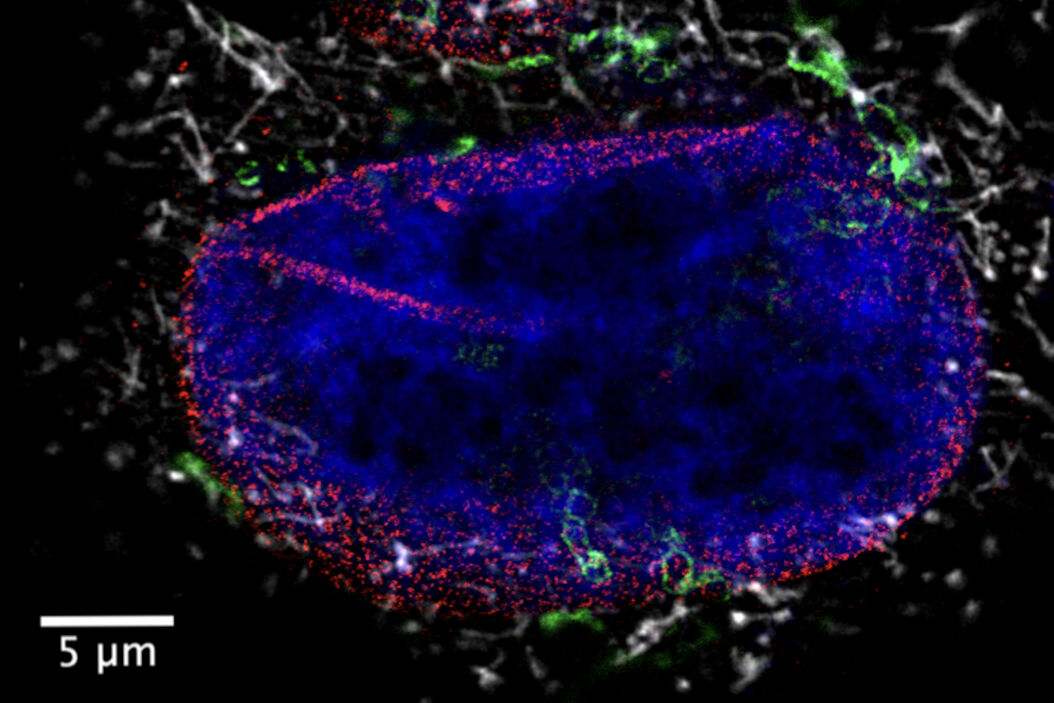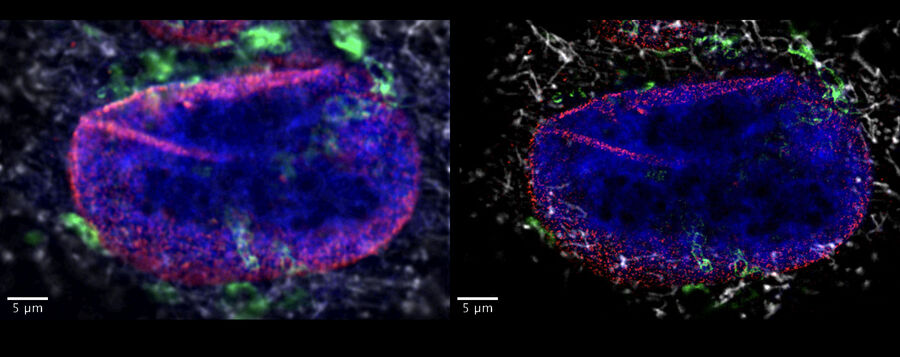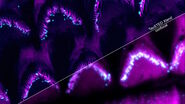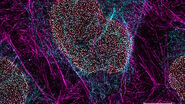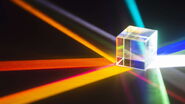Alberto Diaspro is a Full Professor in Applied Physics at Department of Physics, University of Genoa. He is also principal investigator of the nanoscopy research line of the Italian Institute of Technology (IIT). Professor Diaspro founded LAMBS (Laboratory for Advanced Microscopy, Bioimaging and Spectroscopy) and has authored more than 400 international publications. He is an expert in multiphoton microscopy, far field optical nanoscopy, three-dimensional imaging, fluorescence, label-free and optical super-resolution microscopy.
Thanks Alberto for speaking with us today. Could you tell us more about the reasons that that made you purchase a STELLARIS 8 confocal system?
The most important specification I was interested in was the white light laser. And then the possibility of using fluorescence lifetime data in the way STELLARIS does. These two aspects are very interesting for us, as we have been using lifetime data and phasor analysis in the lab for a very long time.
When you talk about phasors, you are referring to the TauSTED capabilities of your STELLARIS 8 system…
Yes, I think that TauSTED is a big jump in the way to do STED. It encourages people to use STED and also to take advantage of sjngle photon counting.
How so?
The starting point for a biological experiment is asking “what am I interested in seeing?” and then, “what is the level of resolution I need to see it?” Let’s say that I know that the resolution I need is below the diffraction limit. How exciting is then having in the lab a system that is able, using two lasers and one knob, to select a special resolution that can answer my biological question and then use that second laser and the knob to improve, in real time, spatial resolution?
TauSTED means having a very robust image at a very high resolution, because you have additional data, fluorescence lifetime information, that you are using in a clever way in order to reconstruct an image. A very famous scientist said in the 1940s that we are not going to overcome the diffraction limit. Diffraction is there, we just add information – we get more details when we reconstruct the image. What we can do now with TauSTED is adding information in an intelligent way, taking advantage of additional information to improve the image reconstruction. This works for confocal imaging, multiphoton, STED or any other mechanism of contrast.
This takes us back to why you were attracted to a system with a white light laser.
Yes. We chose STELLARIS because the white light laser (WLL) is a way to close the spectral circle – you are able to spectrally detect species using a very large number of photons thanks to the AOBS. You have something that is very important: respect for the photons, not losing photos, using all the photos arriving in the best way. And with the white light laser, I can tune my excitation across a region around the excitation spectrum instead of using a fixed laser line. Using the WLL I can optimize also in terms of photobleaching. When we deal with fluorescent molecules, not always the best comes from exciting at the maximum of the excitation spectrum. In some cases, if you can work in other regions, it is a very big advantage when answering a biological question and when one needs to reduce photobleaching.
In short, the main benefit of having a WLL for us is not that you can image 8 fluorescent signals at the very same time. This is great, but for us, the biggest benefit is that I have the freedom of tuning in the excitation and detection. This is very important as the temporal modulation of the illumination.
Another important aspect of having a WLL comes when training users. This is the kind of system you want when training a new generation of microscopists, as you have the freedom of selecting the wavelength for excitation and tuning across the spectral detection. And this has an immense value because, it helps them really start understanding what's going on with fluorescence.
Are there any other aspects of STELLARIS that benefit your work?
There is another aspect that I find attractive: the new family of detectors. When you have detectors able to perform single photon counting and you need them because you deal with lifetime, this means having no more problems in terms of saturation. This is very important for life sciences research, but also for my projects in material sciences.
Overall, this is a real big jump in confocal technology. Resolution is excellent. The way that you instruct the system what you want by using the fluorescence panels really helps you understand what you are doing. Optical sectioning is also very good. The way you do sampling when you need certain spatial resolution. What I tell all the people I am meeting these days is that this is the best commercial confocal system I ever had in my career.
But the best for me is the way you show data related to lifetime. We have been using the phasor approach for a long time now, to navigate fluorescent images and understand what’s going on. When you do this working in super-resolution, this is a substantial advantage
How does your system help you when it comes to setting up experiments?
This is the instrument helping you: The possibility of tuning in the excitation helps in adding the best preparation for your sample. You can perform spectroscopy and microscopy at the same time. Users can really optimize the kind of data they collect using the system. Then you switch to STED, this is fabulous. STED does not mean only having super-resolution, it means having the freedom to navigate to the special resolution you are interested in by turning the knob until you find what you want to see. This is very exciting. I must admit it is very difficult to leave the lab when you are working with STELLARIS 8. You start exploring all the potential of the system and you don’t realize that time is passing!
When you train, what is the difference between STELLARIS and other confocal microscopes?
That they can start thinking what it means to excite at a certain wavelength. They can implement spectroscopy before starting with the image acquisition of a series of, for example, 30 or 50 slides. If at the very beginning, instead of just start acquiring data, they have the chance to understand what is going on by tuning the excitation and the spectral window, their experiments will result in better optimized results. It allows them to understand what it means to excite a fluorescent molecule. It starts by following the suggestions that the system gives them when they select the fluorophores in the setup. But then also having the capacity to manipulate the excitation and detection spectrum, sliding across the different wavelengths makes them experience the information, instead of simply trusting it. One good example: many researchers believe that the best wavelength to excite fluorescein is 488nm, because in other systems with single line lasers, this is the best wavelength they can use. But if you can move it around and you can follow the real excitation spectrum and you can see that this spectrum can change under sample conditions, then you can really see the shoulder in the excitation and emission. You can see the effect when you tune in that you are able to remove undesired signals. This, of course, is good for training, but it’s good for the results of the experiment!
Is there a particular application that could benefit from using STELLARIS 8?
When you have a fixed sample, I’m not saying everything works well, but more or less, everything works. But, when you have a living sample, it's possible that you need to change current conditions to be able to follow better what's going on. Then, we have the quantitative information of what you are doing, in terms of power, in terms of volume of excitation…you have all this data, plus the tunability. That’s your ability to optimize your live cell imaging there, in front of you.
What is the experience of the researchers using the STELLARIS system with TauSense tools?
It is a kind of new world discovery. First, it can seem a bit daunting understanding what to do with this data. What does it mean to get lifetime information? But then when they start working with it, they understand that is it really an additional value to be able to use lifetime information to differentiate amongst fluorescent species and to understand better what's going on in terms of autofluorescence.
What would you say to people that think that WLL are not really for them?
With the white light laser, you can control your experiment better, but you need to understand a little bit more about the experiment you want to carry out. You are adding spectroscopy to your experiment and you need to decide on where to put your excitation spectrum to optimize your specimen. It can be a bit scary to researchers that are not so familiar with microscopy, but it helps them understand how to best optimize their experiment, so they can avoid things like photobleaching and they can really get the best signal out of the sample. To do science instead of just imaging.
This WLL is easily tunable. For us the biggest wish we had was to be able to use the WLL to get lifetime data, which now you do. We also wanted to perform FRET experiments, because WLL is exceptionally well suited for it. You can approach FRET in any way you want: spectral shift, lifetime, and without unwanted photobleaching of the acceptor or the donor due to being restricted to fixed wavelengths. Now you can select the best wavelength and not destroy your experiment.
Today, I think that this is the best microscope I ever had in the lab.
Professor Alberto Diaspro
What about the red extension and going to the NIR area?
Yes, we have some researchers that want to use it. Mostly because of the efficiency of labelling and the duration of the experiment. When you move towards the infrared spectrum, you can perform your experiment longer and most of the researchers who are interested in embryo and zebrafish, thick living samples, can definitely benefit from the red extension. If you need to image deep, moving to towards the red is always the best.
So, before we conclude our interview, is there anything else you would like to share?
Let me tell you that we have the best technical assistance from the Leica Microsystems team. Every time we have a call, we get an answer in such a short time - understanding what’s going on and explaining what to do, solving the problem rapidly. This is an immense value for us, as our system is completely booked. For me, Leica Microsystems’ technical service is the best there is in Italy. A good service makes the difference when you get a commercial system in your lab for your own research and which is shared within an institutional facility context.
